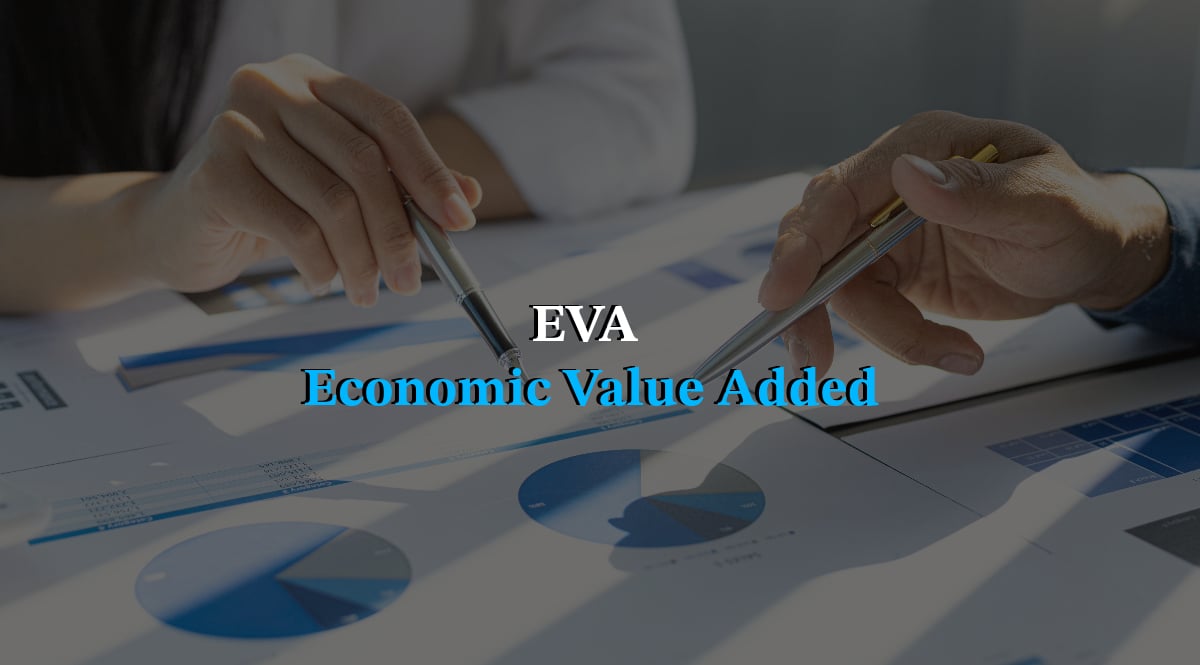
How to Find EVA? And What Is Economic Value Added?
There are numerous questions about EVA. For instance, “How to find EVA?” “What is economic value added (EVA)?
What comes to mind when someone mentions “Economic value added (EVA.)” It is a measure of a company’s financial performance based on the residual wealth calculated by deducting its cost of capital from its operating profit, adjusted for taxes on a cash basis.
How to find EVA
EVA can be calculated using the following formula:
EVA=NOPAT−(Invested Capital×WACC)
Where:
NOPAT stands for net operating profit after taxes, which is the profit a company has left after paying taxes but before paying its capital providers.
WACC is the weighted average cost of capital. Importantly, WACC represents the average rate of return the company needs to compensate all its investors: shareholders, creditors, etc.
Invested Capital is the total amount of money invested in the business, including debt and equity.
In simpler terms, the formula determines how much profit exceeds the cost of doing business.
As can be seen from the information mentioned earlier, it is quite easy to answer the question “How to find EVA?” However, it is vital to gather more information about EVA to understand its role and importance better.
Role of EVA

What makes EVA so important to investors? It is desirable to gather more information about EVA.
Performance measurement: As opposed to other profitability metrics, EVA considers both the operating performance and the financial performance of a company. It considers not just the operating profits but also the cost associated with acquiring the capital to achieve those profits. This dual perspective makes EVA a holistic measure of a company’s performance.
Capital allocation: Companies constantly face decisions regarding where to allocate capital. Should they invest in a new project, pay out dividends, or repay debt? EVA provides a framework to assess which options are expected to generate a return above the cost of capital and thus add value to the shareholders.
Compensation tool: Some firms use EVA as a basis for executive compensation. Executives are rewarded when they increase EVA, aligning their interests with those of shareholders. When managers know they will be compensated based on value creation, they might be more motivated to make decisions that truly enhance the company’s value.
Benchmarking: Companies can use EVA to compare their performance against competitors or industry benchmarks. Since EVA measures value creation, a higher EVA indicates better financial health and management effectiveness.
Importance of EVA (part two)

Shifts focus from revenue to value creation: Traditional measures like earnings or sales growth can sometimes be misleading. A company can have high sales growth, but if it’s not generating a return above its cost of capital, it’s not truly creating value for shareholders. EVA brings the focus back to genuine value creation.
Reduces short-termism: Public companies can sometimes get caught in the cycle of quarterly earnings pressures. EVA provides a more long-term view, emphasizing sustainable value creation over short-term profit gains.
Incorporates risk: By accounting for the cost of capital, EVA inherently factors in the risk associated with a company’s operations. Businesses with riskier projects have a higher WACC and, therefore, a higher threshold to create value. This ties the notion of risk and returns together in a company’s performance metric.
Encourages efficient use of capital: Companies with a positive EVA are effectively using their capital, as they generate returns in excess of the cost of that capital. This can encourage companies to be more disciplined in their investment decisions and to continually assess the productivity of their assets.
Promotes transparency: EVA is straightforward in its computation. Stakeholders can see how much of the profits truly contribute to shareholder value. It can be a powerful tool for external investors to gauge the health of a company and for internal stakeholders to set targets and measure performance.
Aligns interests of managers and shareholders: When used as a basis for compensation, EVA can align the interests of managers and shareholders. Managers become motivated not just to increase profits but to do so in a way that exceeds the company’s cost of capital.
Conclusion
In an evolving business landscape, simple measures of profitability may not suffice. The success of a company should not just be based on how much profit it makes but on how much value it creates for its shareholders.
Economic Value Added (EVA) provides a comprehensive view of a company’s performance by integrating the concepts of profit, investment, and risk.
Incorporating EVA into strategic decision-making can provide clearer insights into which initiatives, projects, or investments are most likely to contribute to the long-term growth and success of a company. It offers stakeholders a transparent view of whether the company’s management genuinely acts in their best interests. To make a long story short, EVA serves as a guiding light, pushing companies towards decisions that truly add value.
The post How to Find EVA? And What Is Economic Value Added? appeared first on FinanceBrokerage.

